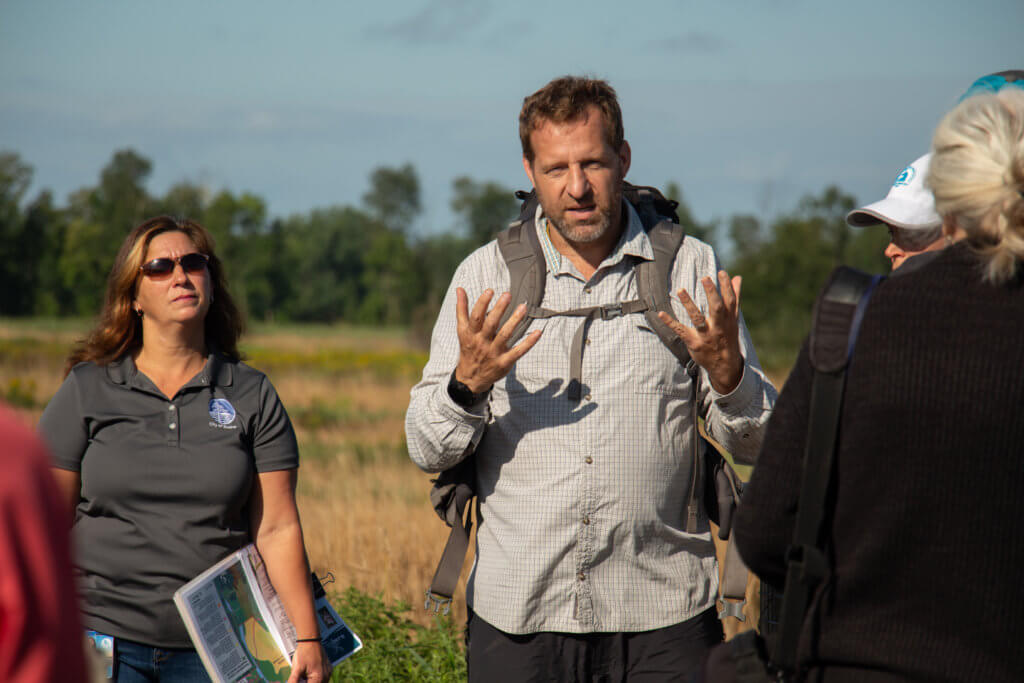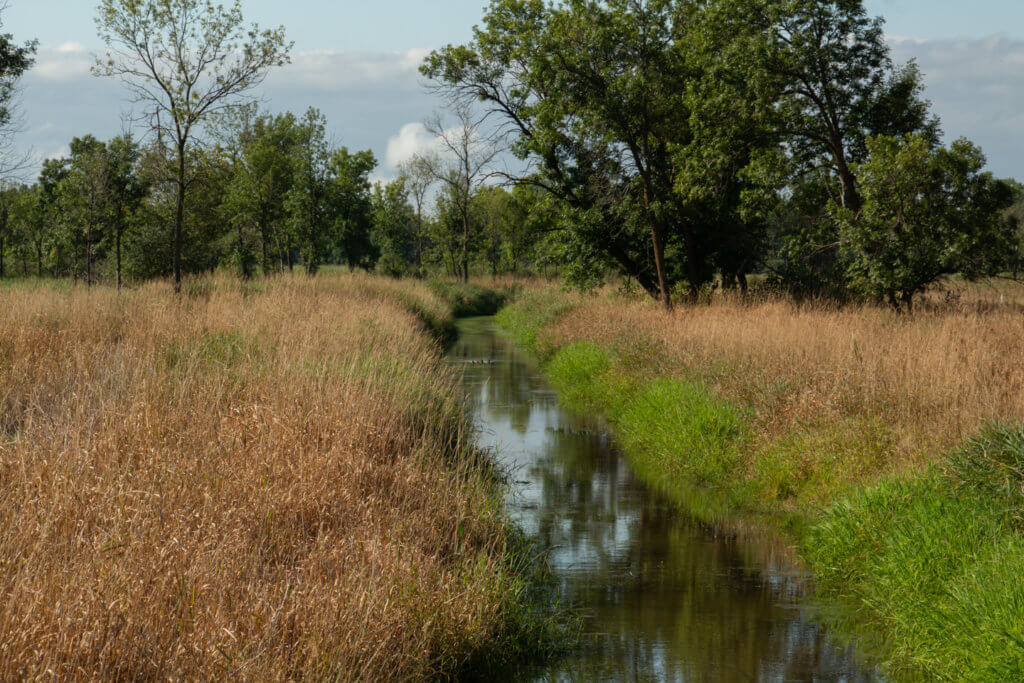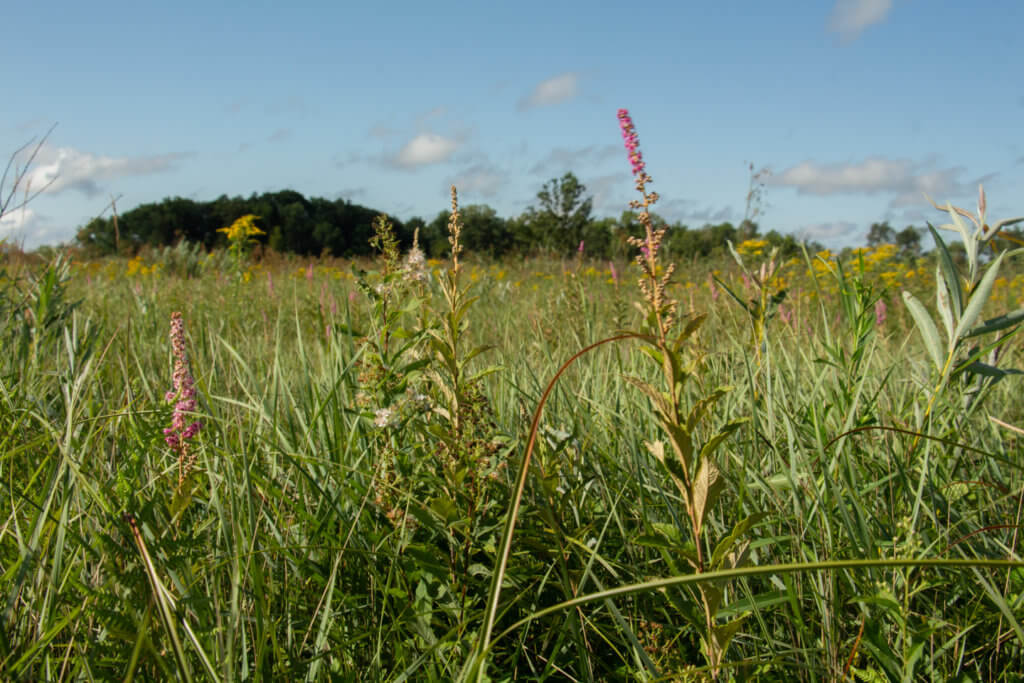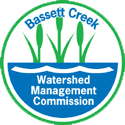Blaine’s Wetland Restoration Revives Endangered Species
Mon, Aug 26, 2019In the middle of the Blaine Wetland Sanctuary, a 10’ by 10’ meter plot of ankle-height vegetation is bursting with life. This small section of the 510-acre sanctuary is home to nearly 100 species of plants, including rare and state-endangered species such as lance leaf violets, sundews, and twisted yellow-eyed grass. Thanks to the foresight of Jason Husveth from Critical Connections Ecological Services, the City of Blaine has embarked on a long-term wetland restoration project that’s reviving a landscape nearly lost to time.

Wetlands are remarkable landscapes that regulate water-flow and support an incredibly diverse range of plants and wildlife. They help to manage water during wet and dry times by acting as a giant sponge. During floods, wetlands capture water, and during drought, they slowly release water back into the environment. While a wetland holds onto runoff, it acts like a mini water treatment facility. Long plant roots filter pollutants and absorb nutrients like phosphorus to help prevent algae blooms.
Today, these landscapes are threatened by climate change, development, and invasive species. Efforts to drain wetlands, whether it’s to farm them or build over them, have had serious consequences for the environment. When wetlands are destroyed, the risk of flooding increases. The loss of habitat for plants and animals that depend upon wetlands has also challenged many species.

Tapping into the native seedbank
The City of Blaine is located on the Anoka Sand Plain, a flat, sandy plain that was formed during glaciation 10,000 years ago. As a result of the region’s geologic history, there is an unusual depth of peat in its wetlands. Peat is a surface layer of broken down plants and organic matter that usually accumulates at a rate of less than one millimeter per year, but in some areas of the Blaine Wetland Sanctuary, the peat is 25 feet deep.
Historically, fire has been an essential part of Blaine’s wetlands, and the plants that evolved there depend upon regular burns to thrive. Before European settlers arrived, Native Americans were known to promote fire because of its regenerative power. Native plants are fire-adapted and produce abundant flowers and fruits after a burn. Decades of fire suppression has taken its toll on these plants.
Around 100 years ago, settlers attempted to drain and farm the wetlands of Blaine. As a result, trees and invasive species moved into the landscape, covering the peat with a thick layer of thatch. Trapped beneath the invasives is a trove of native seeds waiting to emerge. Since the city passed a referendum to support this project in the year 2000, the City has undertaken a painstaking restoration process, first removing trees and invasive species, and then reintroducing fire to the landscape.
After extracting thousands of trees as well as a six-inch layer of mulch atop the peat made from invasive species, the wetland was finally ready for its first prescribed burn last May. The results were staggering. In the past 20 years, Jason had seen only a couple dozen ragged fringed orchids bloom here. After the burn, “There were easily 500 in flower,” he said, “They’d been hanging out, waiting for a fire event. It’s pretty incredible.” That’s just one example of over one hundred species that responded positively to the fire.

Now wildlife is flocking back to the Sanctuary, too. Trail cameras have spotted a wide variety of birds, mammals, and amphibians. “We’ve heard from birders that they’re seeing species here that haven’t appeared in 20 to 30 years,” says Rebecca Haug, Water Resources Manager for Blaine. “It’s encouraging to see that this restoration is doing what we hoped.”
Do your part to protect wetlands
Restoration of the Blaine Wetland Sanctuary is ongoing, with many future trailheads already marked in nearby housing developments. You can visit the site today and enjoy a hike along the boardwalk. While you’re there, snap a photo at one of their photo posts and upload it to this website. These citizen science contributions help the staff keep track of changes to the landscape through the seasons.
You can also support wetlands in your own backyard by reducing the use of fertilizer and pesticides. Keeping excess nitrogen out of the soil will prevent it from running off into storm drains and polluting waterways and wetlands. If you have a low or wet spot in your yard, it might be a wetland. There are many types of protected wetlands in Minnesota. Check the DNR website to learn more about the different varieties and benefits of each.
Planting native vegetation in your yard is always a good idea and, if you live near a wetland, edging your lawn with native plants is especially important. Thoughtful planting will slow and filter runoff while also preventing erosion at the water’s edge. Native plants provide cover and food for birds and other wildlife while offering homeowners a natural screen of colorful blooms throughout the seasons.
